Kuche/Kuqa is a small city about halfway between Urumqi and Kashgar along the northern silk road, which skirts the northern edge of the Taklamakan desert.
Although there are trains that run between Urumqi and Kashgar, stopping in Kuche, the train takes 14 hours and there's only one night train, arriving just after noon. I instead decided to take a night bus, which is quicker as it takes a more direct route instead of going through Turpan, and arrives early in the morning.
Since there's no cheap place for foreigners to stay in Kuche, and not a lot to see in the city proper, I decided to only stay the day and to take a night bus to Hotan, on the south side of the Taklamakan (there's a new highway that cuts through the middle of the desert, connecting the north and south sides). Unfortunately, this bus leaves at 2:30 pm (Xinjiang time), meaning I wouldn't have too much time in Kuche.
As usual for the Xinjiang section of Lonely Planet, the practical information isn't as helpful as you one would like. Kuche, like many Chinese towns, is split into an old town (mainly Uyghur) and a new town (where the Han live). The bus station is in the new town, while the old town is some four kilometers east of the old town, which lies on the western side of the Kuche river. Between the bus station and the old town are the ruins of the Qiuci ancient city, which were closed for restoration and construction when I was there, but which looked like a less impressive version of Jiaohe crossed with the unrestored Great Wall at Jiayuguan: the vague remains of rammed-earth walls, but not much more. Perhaps that has changed.
The road west to old Kuche splits in two before the Qiuci ruins, and I took the northern path, which passes by the ruins before crossing the river and running along a stretch of Qing-era city walls.
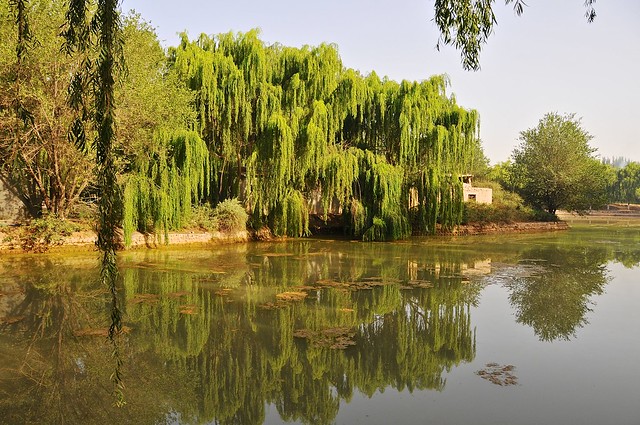 |
| Xinghua park, across from the Qiuci ancient city, is Chinese in concept, with the typical pond and weeping trees, but the spaces around the pond are very dusty and scraggly, unlike your typically grassy Chinese park. |
 |
| A stretch of the old rammed-earth city walls. |
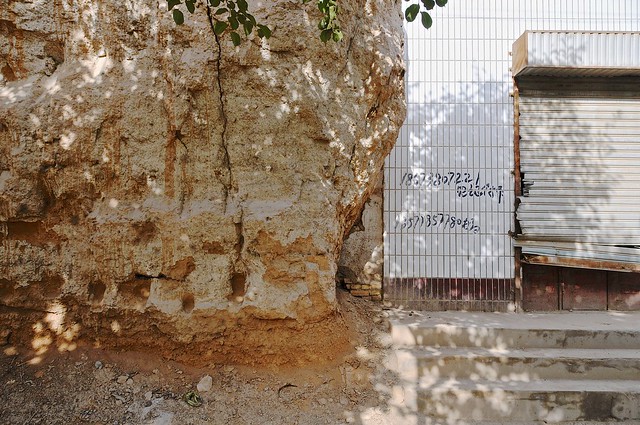 |
| The transition from old city wall to (relatively) modern buildings is remarkably abrupt. |
 |
| Moderately-restored wall, unrestored wall, and typical Uyghur buildings. |
 |
| Colourful house-fronts along the main street in the old town. |
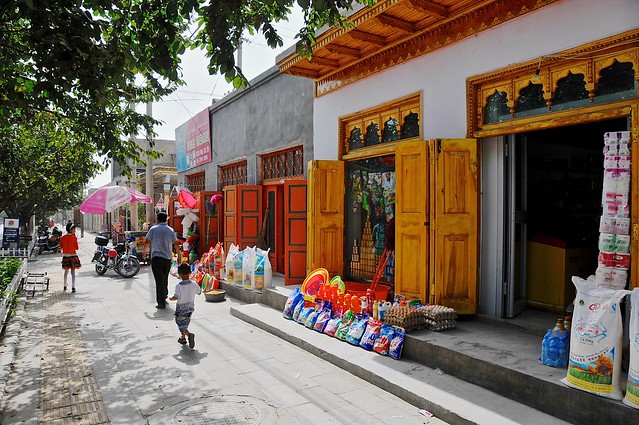 |
|
| Shops with their goods displayed in the street. |
 |
| A shashlyk (kebab) grill. |
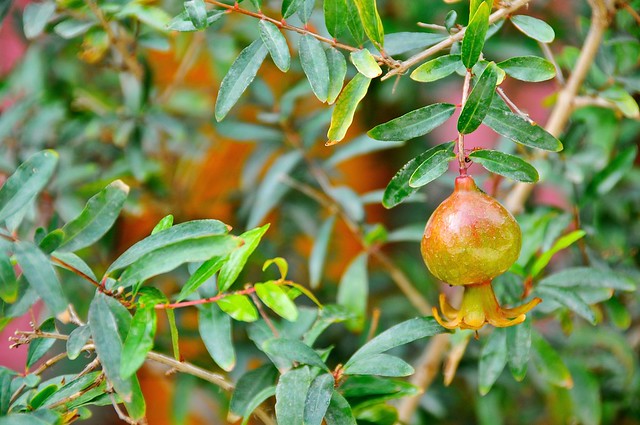 |
| A pomegranate tree along the main street. |
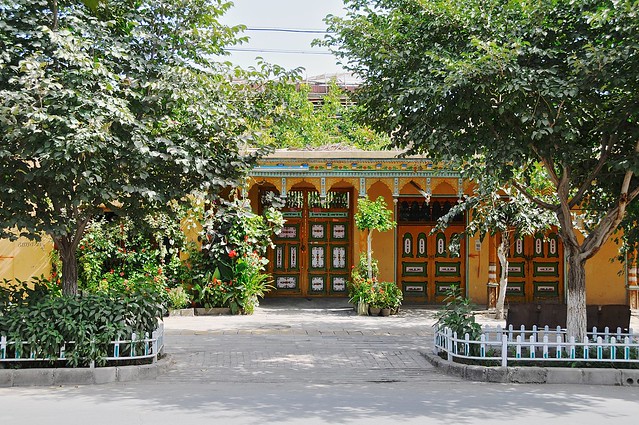 |
| Colourful houses or shops. |
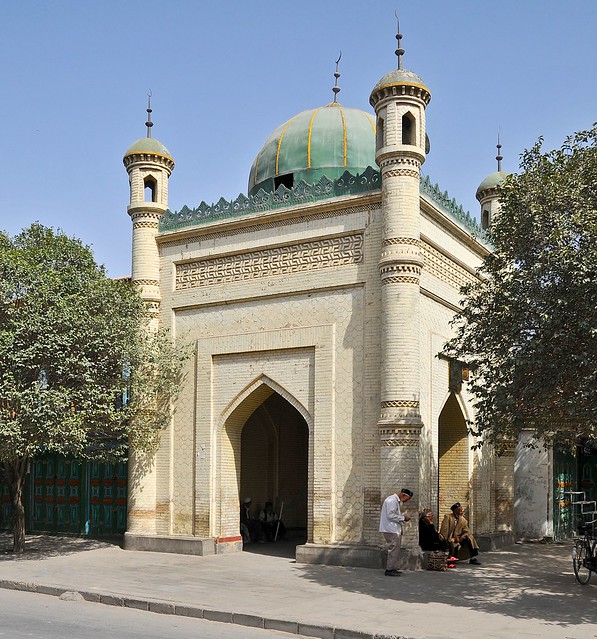 |
| The local mosque at the end of the main street, near the river. |
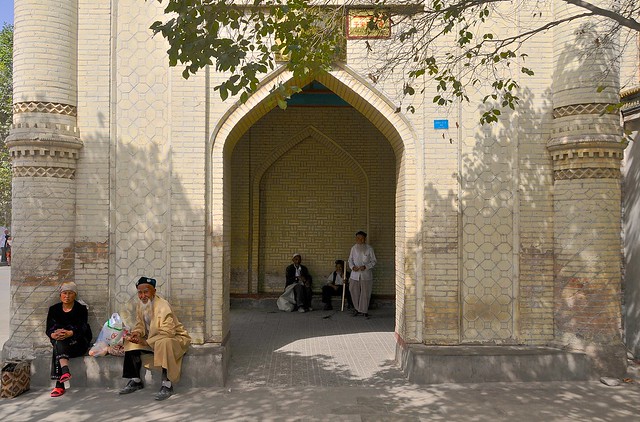 |
| Relaxing in the shade. |
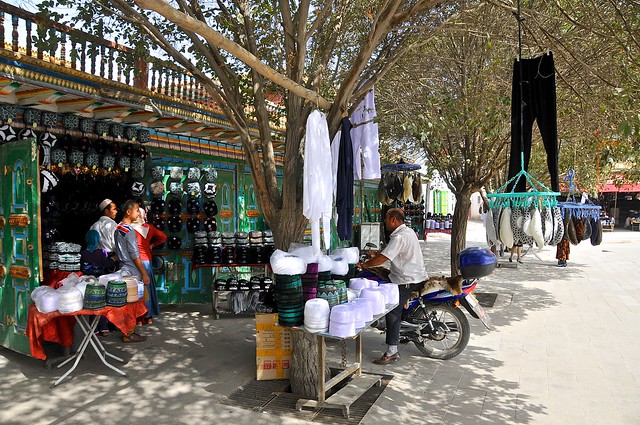 |
| The shops next to the mosque sell religious garb and coffins. The
typical Uyghur dopa hat is the green beaded cap seen hanging over the shop. |
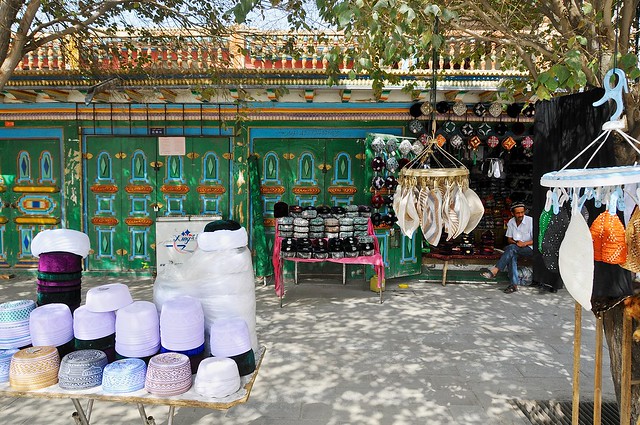 |
| But they sell all kinds of skullcaps. |
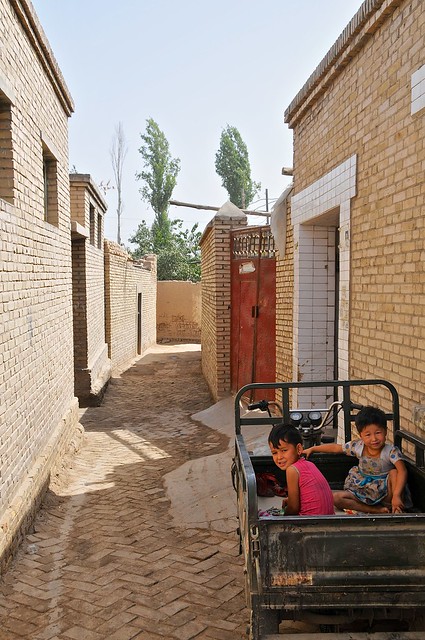 |
| Uyghur kids—probably siblings—playing in the back of a trike on a side street. A contrast to the usual single-child Chinese families. I wonder if this policy, which ostensibly benefits the Uyghur and other minorities, doesn't actually put them at an individual disadvantage, since Han parents focus all of their resources on a single child. |
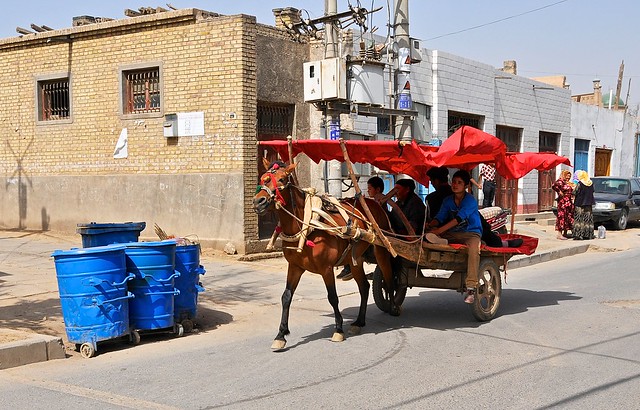 |
| A Uyghur minibus. No kidding. |
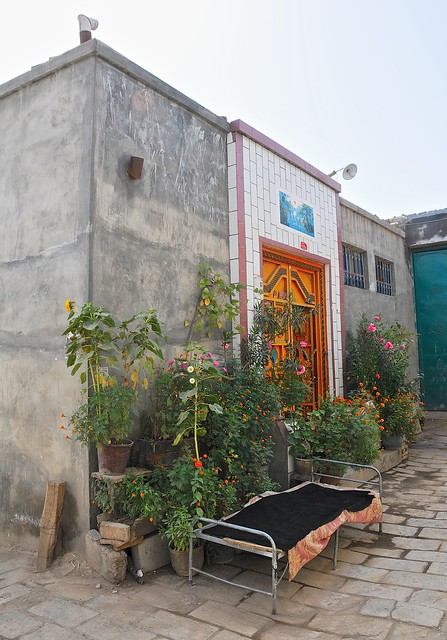 |
| I'm not sure why they put beds in front of their homes instead of the back or the roof. But that's probably me belying my Western standards of privacy. |
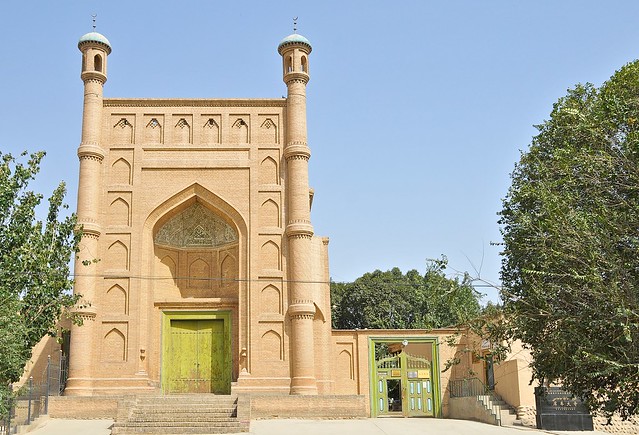 |
| The entrance to the Great Mosque of Kuche. Admission is 15 yuan. |
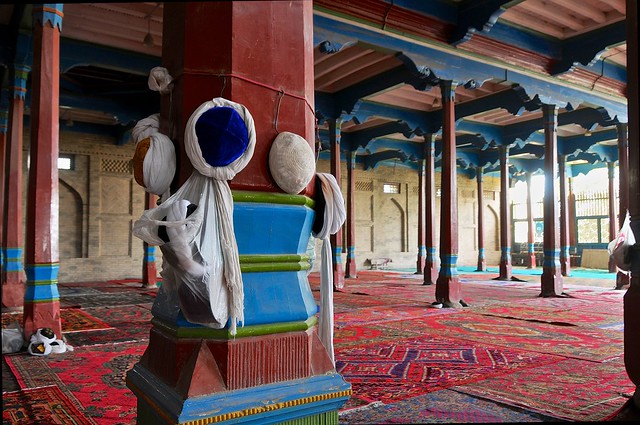 |
| Skullcaps and prayer carpets line the interior. Even if you wear a dopa, it seems customary to don one of these hats while praying in the mosque. |
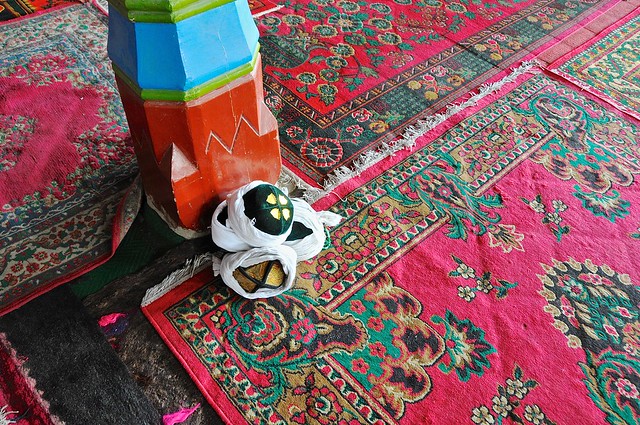 |
| These turban-like hats are particularly interesting since people in Central Asia used to wear turbans, even though skullcaps tend to be the norm today. |
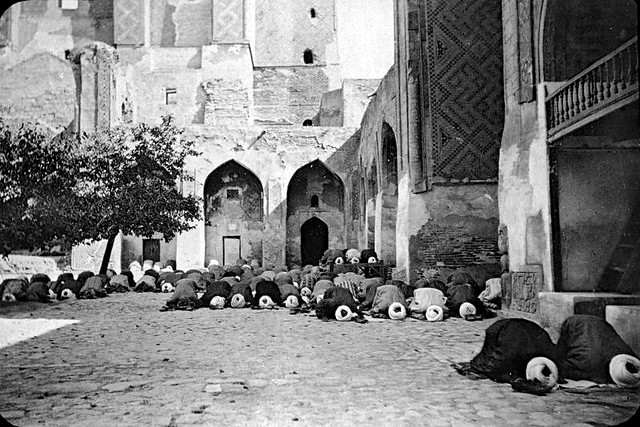 |
| This 1890 picture from Samarkand, Uzbekistan, showing locals praying indicates that turbans were customary (at least during prayers). |
 |
| Through the lattice windows. |
 |
| Prayer beads on the carpet. |
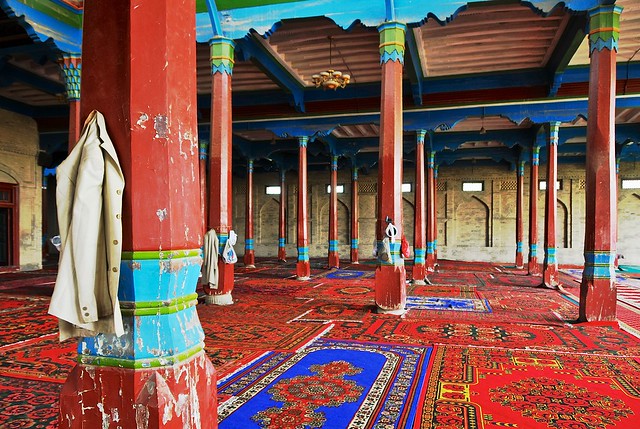 |
| Supposedly the mosque can hold 3,000 people, but I find this hard to believe. |
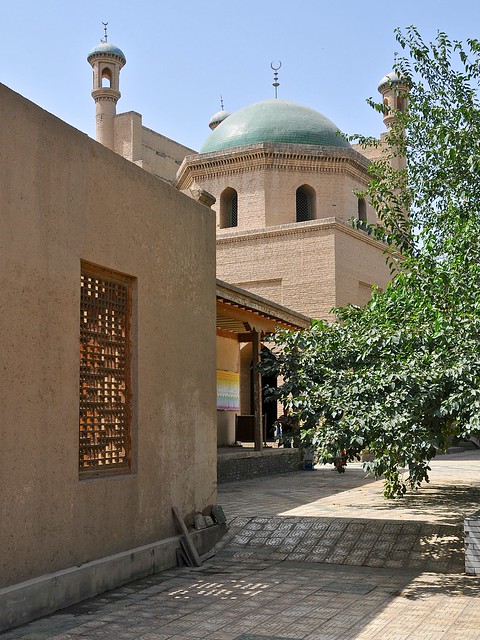 |
| From the mosque grounds. |
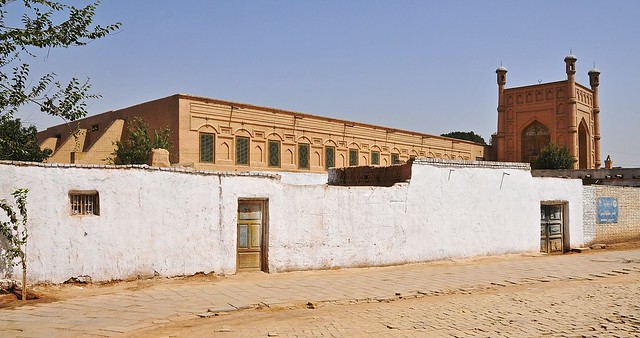 |
| The mosque from a nearby courtyard. |
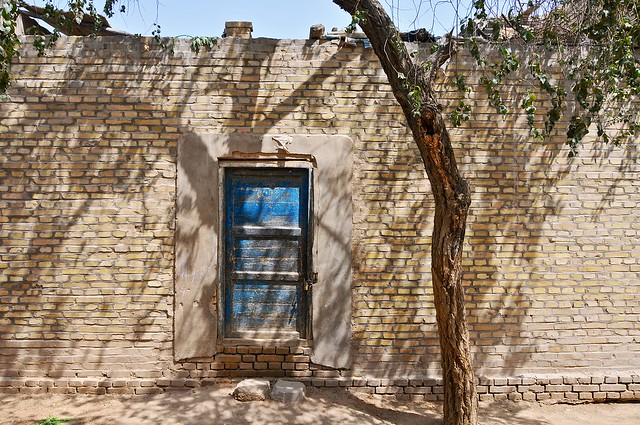 |
| Weather-beaten doors and buildings. Doors and windows are often recycled and reused even when new buildings or walls are constructed, lending an aged look to even relatively new buildings. |
 |
| Doors and windows in the old town. |
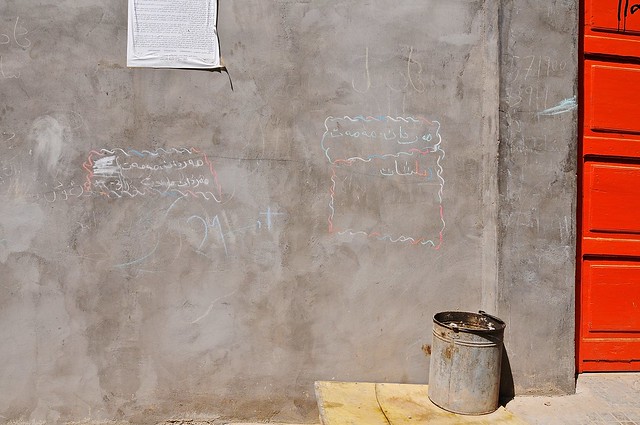 |
| Concrete walls double as blackboards |
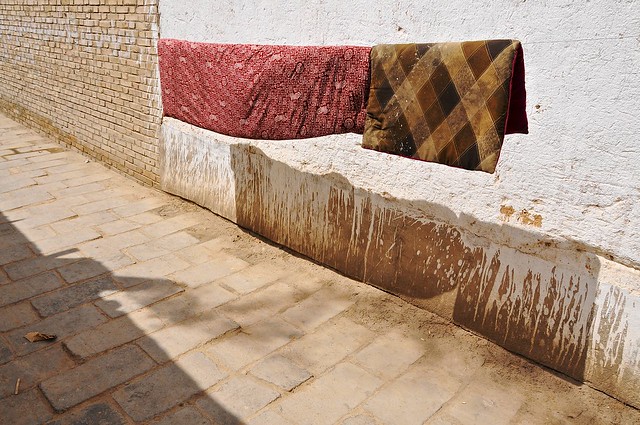 |
| Laundry drying and a chimney puffing in the scorching summer heat. Cooks gotta cook. |
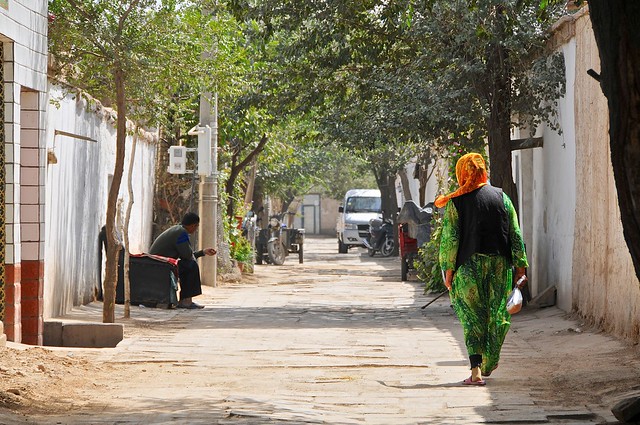 |
| Typical Uyghur attire for women: colourful dress over black leggings, and contrasting scarf. |
 |
| Entrance to a small mosque. |
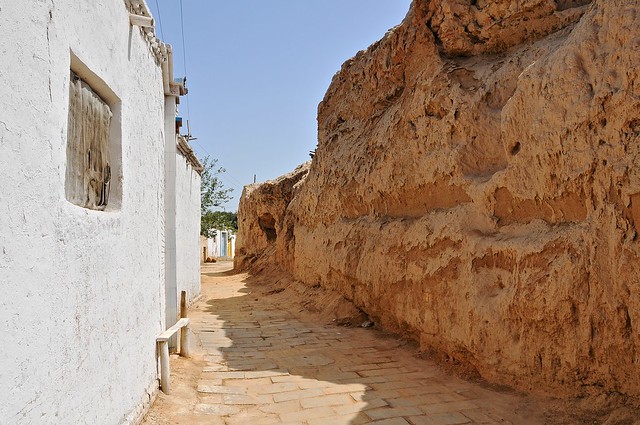 |
| Ancient city walls literally at your doorstep. |
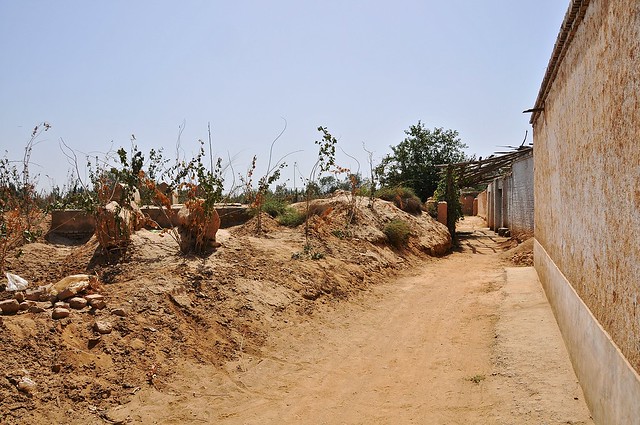 |
| Or a cemetery. |
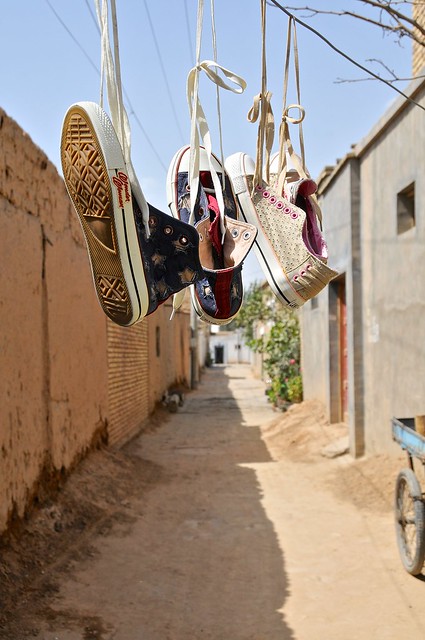 |
| Knockoff Chucks hanging out to dry. |
 |
| Narrow alleys and shabby-chic houses. |
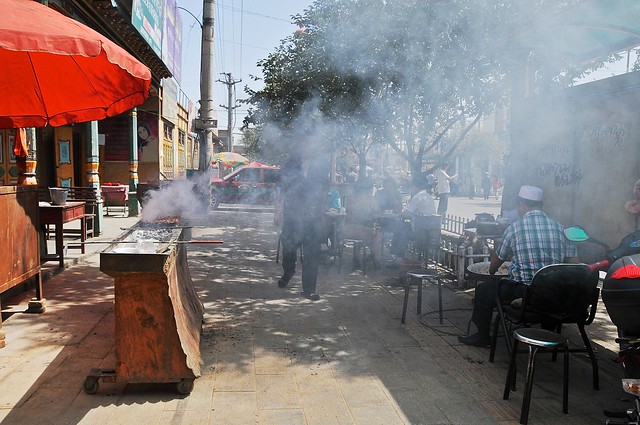 |
| Bed of hot coals ready to grill some skewers. |
 |
| Horse-bus on its way to the new town, with the local mosque in the background. |
Although there wasn't really anything that was particularly amazing about Kuche, I still enjoyed being there. The old town was probably the best I experienced in Xinjiang, if only because it wasn't being torn down, it wasn't too touristy, it had the pace of a small and relaxed town, and was full of character in an authentic-feeling way.
In retrospect, I think that it would have been cool to have seen the "Grand Canyon" located about 70 km north on the G217 highway, a visit usually combined with a trip to the
Kizil Thousand-Buddha Caves. The
Tian Shan Grand Canyon actually looks less like the Grand Canyon and more like the slot canyons you can find in the Four Corners area of the USA—not necessarily a bad thing in my book—and apparently very few tourists go there. Seeing these would have necessitated staying a day in Kuche and spending money on either a taxi or a tour, neither of which really fit within my budget, unfortunately.
Overnight Bus to Hotan
Although the bus left at 2:30 Xinjiang time, the bus was a sleeper bus. After about an hour of driving on the edge of the desert, we took a turn straight into the desert. Although it seems like a feat of engineering to have a road through the middle of the Taklamakan desert—the G217 was only completed in 2007—in reality the highway follows an old trade route, as the Hotan river flowed all the way to the Tarim river on the norther silk road, and the ruins of an old fort,
Mazar Tagh, can still be found about 180 km north of Hotan.
Today, the highway is stabilized by plastic mats and vegetation planted (and watered) at the sides of the road, both of which serve to prevent sand from blowing onto the road and covering it. Aside from a gas station in the middle of the highway, there's absolutely nothing to see on the highway aside from periodic caretakers' houses for those who maintain the road and water the grass.
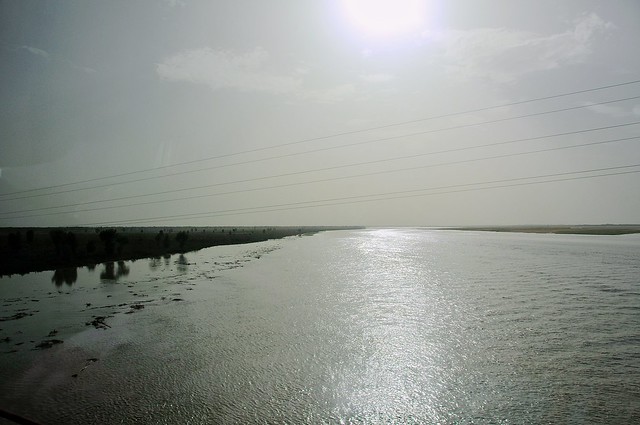 |
| Crossing the Tarim river on the northern edge of the Taklamakan. The heavy tint on the bus windows keeps you comfortable but makes it difficult to get good pictures. |
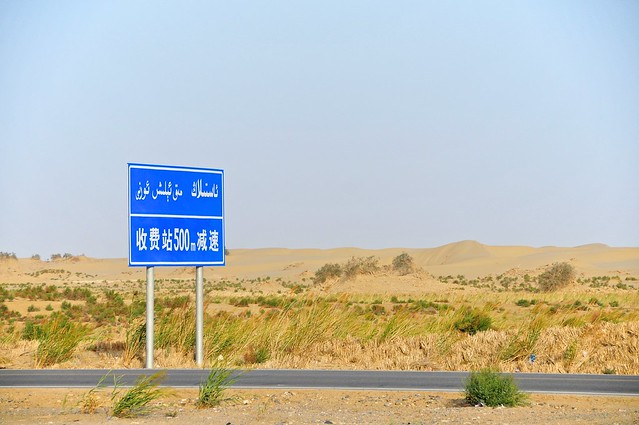 |
| View from the filling station midway through the desert. The toilets were bad even by Chinese standards so everyone went in the grasses, me included. I must be turning Chinese, because in the West I can pretty much hold my bladder indefinitely—even when I'm not in a place that's scorching hot and bone dry. |
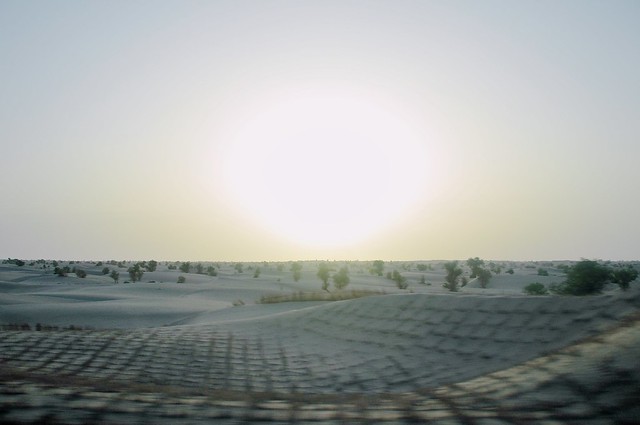 |
| You can see the lines of vegetation and the plastic sand matting. |
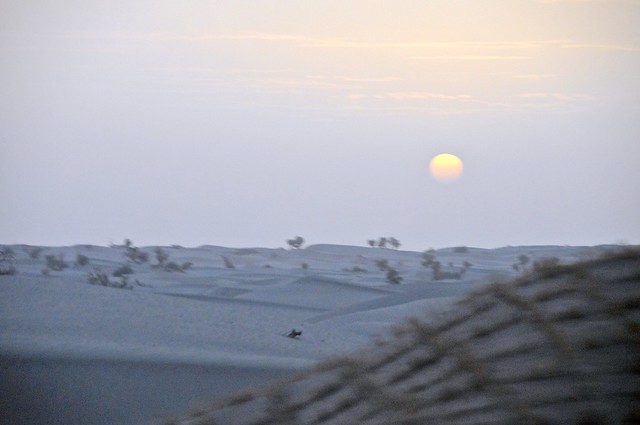 |
| The sun sets over the Taklamakan. |
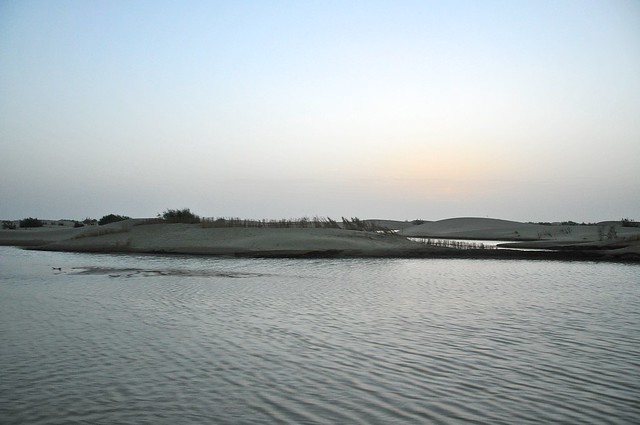 |
| An unusual pond in the dunes. |
Budget
August 22 in Kuche: 215 yuan
- Bus to Hotan: 179 yuan
- Great Mosque admission: 15 yuan
- Drinks: 20 yuan
- City bus: 1 yuan









































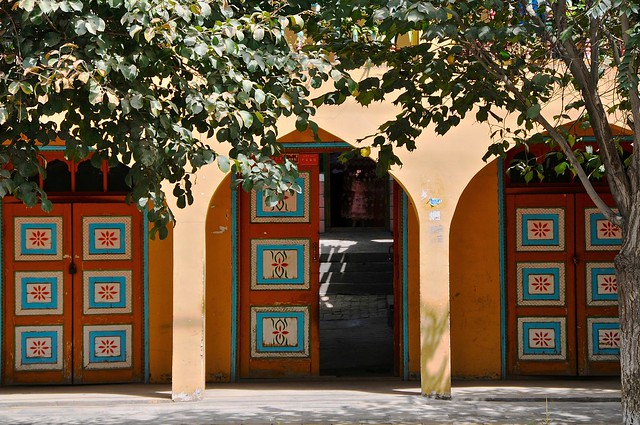

I really enjoy your pictures. I look forward to going back to Xinjiang and exploring the southern part of the Tarim basin. Hope Lonely Planet has gotten better over time.
ReplyDeleteThanks!
DeleteThe southern route sounds great—a real chance to get off the beaten track! As for Lonely Planet, I suspect that everything depends on the author, so I hope Michael Kohn has been replaced for the Xinjiang chapter.
This comment has been removed by the author.
ReplyDelete